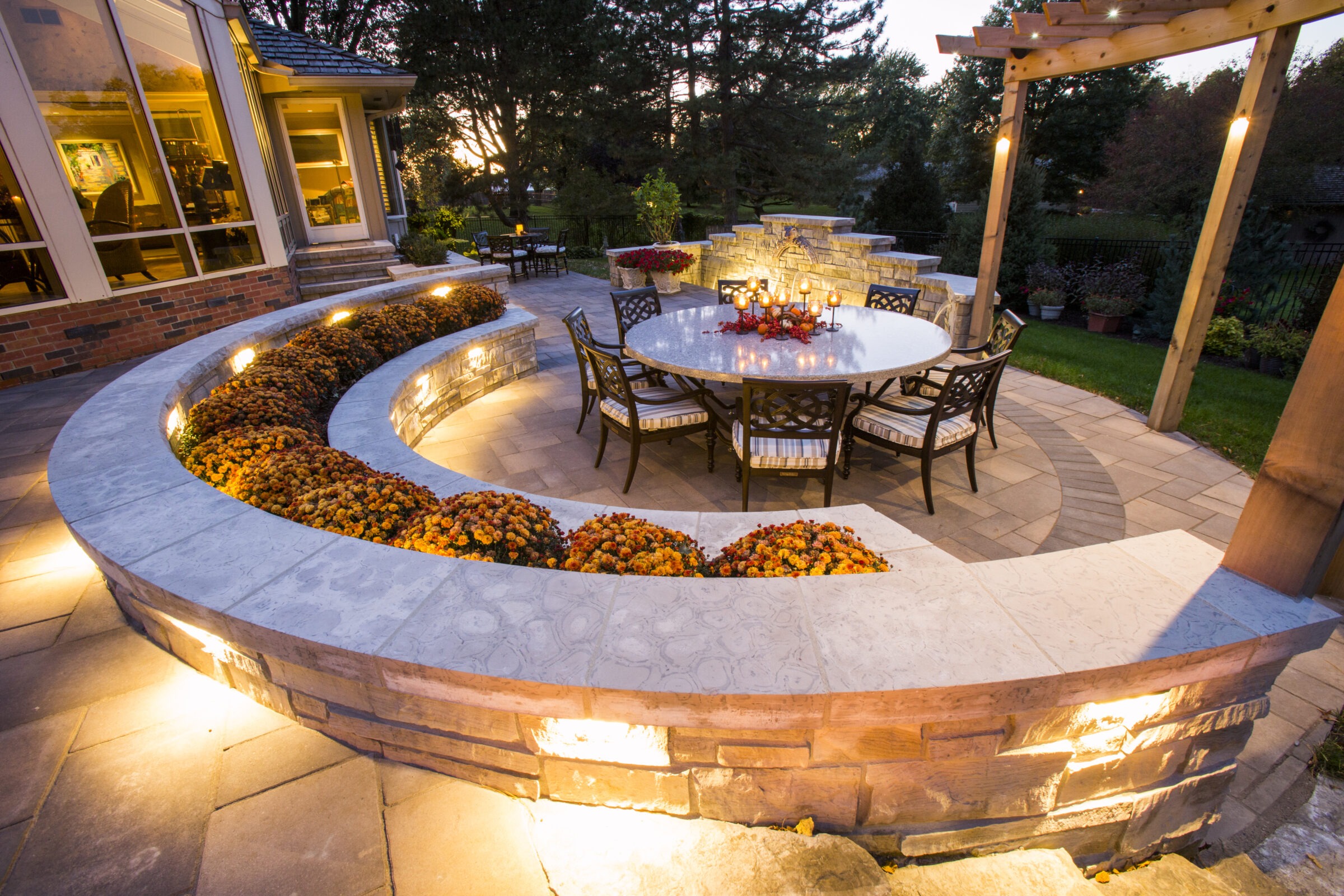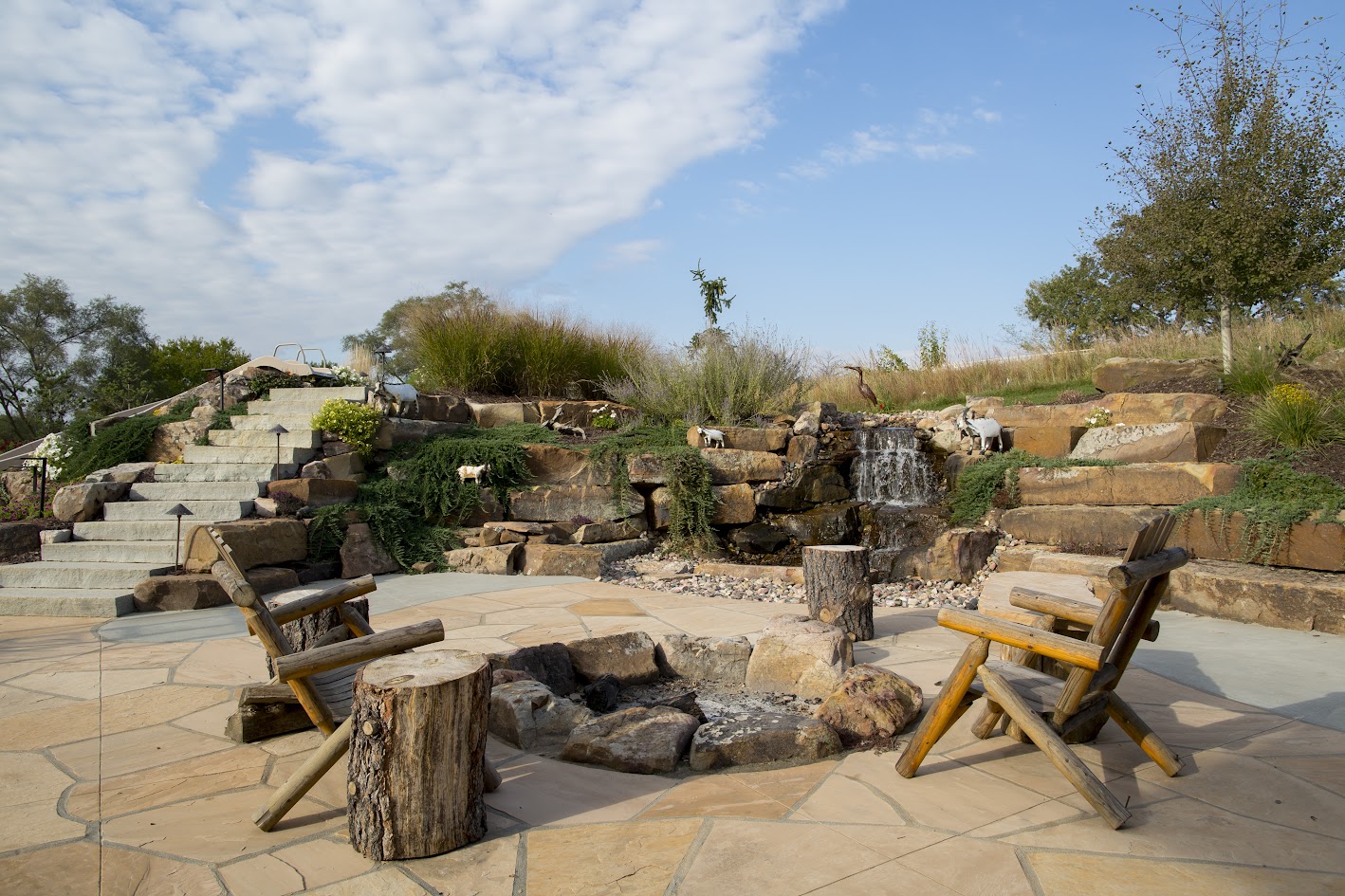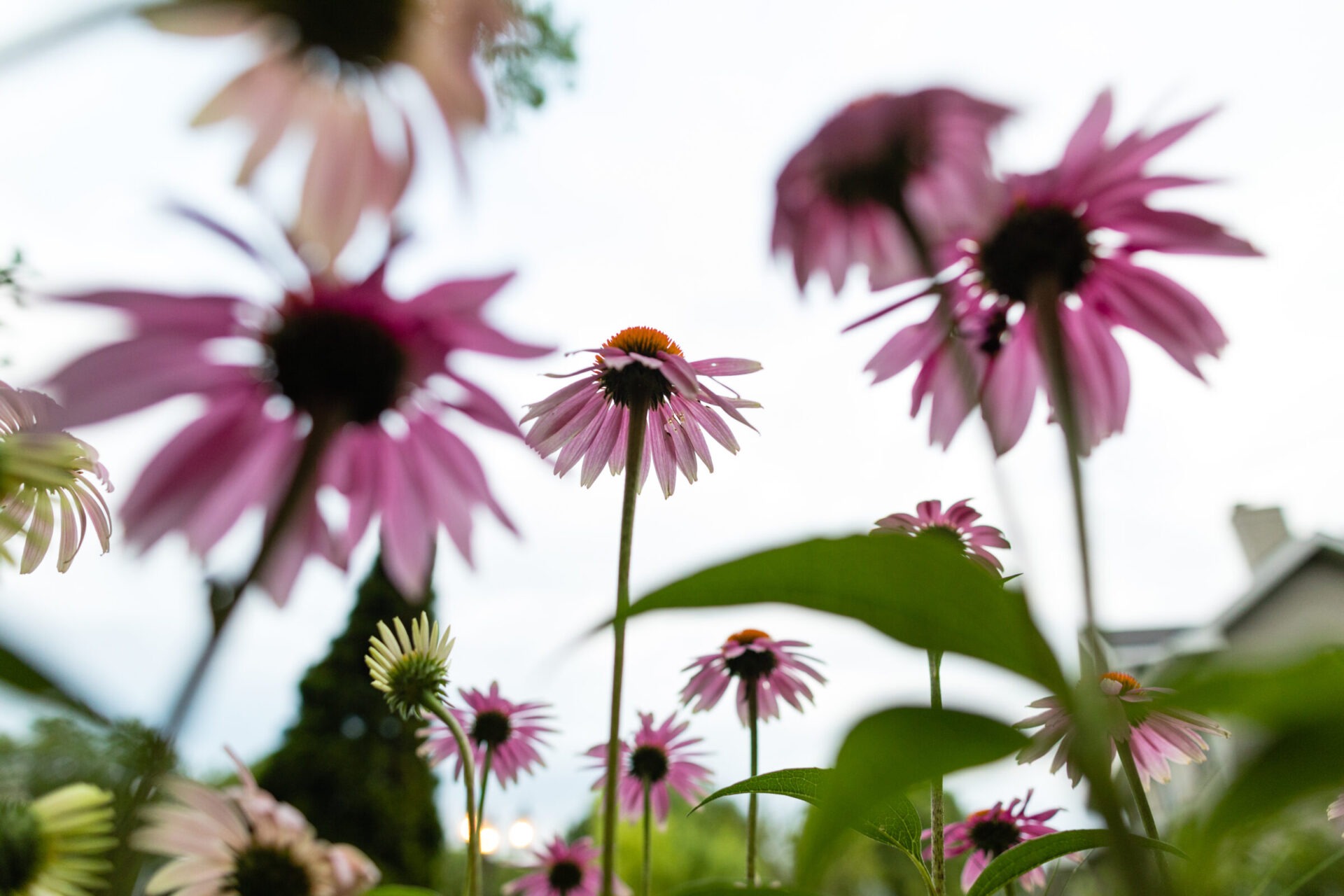Xeriscaping: Hardscaping with Intent

Traditional hardscaping, while creating attractive and functional outdoor spaces, often doesn’t prioritize water conservation. Many designs, particularly those with water features, can consume a lot of water, increasing utility costs and impacting local water supplies. This approach also frequently overlooks sustainable practices and native plant integration, leading to landscapes that might require more maintenance and be less environmentally friendly. For homeowners, this can mean higher expenses and more effort. Your hardscape could become a source of ongoing costs and maintenance rather than just enjoyment. This is not solely about appearance; it also concerns the financial implications, environmental effects, and potential inefficiencies of a landscape that may demand more than it provides.
Xeriscaping offers a new perspective on landscape design that addresses these issues. It demonstrates that beauty and sustainability can coexist. By incorporating water-saving principles into your hardscape design, you can create appealing and durable features that use less water. This method encourages the use of native, drought-tolerant plants, which reduces the need for frequent irrigation and extensive upkeep. For homeowners in Omaha, adopting xeriscaping can lead to lower water bills, less maintenance, and a vibrant, eco-friendly outdoor area. It’s a design philosophy that conserves water, reduces maintenance, and transforms your outdoor living space into a beautiful, sustainable environment.
What is Xeriscaping?
Xeriscaping is more than just a buzzword; it’s an intentional approach to landscape design that prioritizes water conservation by using drought-tolerant plants, efficient irrigation systems, and thoughtful hardscaping features. The core goal is to create a landscape that requires less water, reducing both your environmental footprint and your utility bills. It doesn’t mean you have to sacrifice beauty to function, though — when done right, xeriscaping can result in a gorgeous, sustainable landscape that thrives in Omaha’s climate.
How Xeriscaping Helps Conserve Water

In a region like Omaha, where the weather can fluctuate between hot, dry summers and cold winters, water conservation becomes even more important. Xeriscaping is designed to minimize water usage by strategically selecting plants that can thrive with minimal irrigation. Here’s how it works:
- Choosing Drought-Tolerant Plants: One of the primary strategies in xeriscaping is selecting plants that are naturally adapted to dry conditions. Native plants, in particular, are ideal because they’ve evolved to survive on the amount of water naturally available in the region and are already suited to the local climate, thriving without intervention. These plants are typically lower-maintenance, require less water, and need fewer chemical fertilizers or pesticides, making them an environmentally sound choice for sustainable landscapes.
- Efficient Irrigation Systems: Xeriscaping isn’t about abandoning your lawn entirely. Instead, it focuses on smart irrigation practices, such as drip irrigation or soaker hoses, to deliver water exactly where it’s needed — directly to the roots of your plants. This precise delivery prevents water waste and helps ensure that your plants get the moisture they need without overwatering, promoting stronger root systems and healthier growth with minimal effort.
- Mulching for Moisture Retention: Mulching is another essential aspect of xeriscaping. By covering the soil around plants with organic mulch, you help retain moisture, regulate soil temperature, and reduce evaporation. This allows you to water less frequently while still maintaining a healthy garden, as the mulch acts as a protective barrier, fostering a stable environment for your plants to flourish and thrive.
- Reducing Lawn Areas: Traditional lawns are notoriously water-hungry, requiring frequent watering to stay green and healthy. With xeriscaping, you can significantly reduce the size of your lawn or eliminate it altogether in favor of drought-tolerant ground covers or hardscaping elements, thereby conserving substantial amounts of water and creating a more sustainable and aesthetically pleasing landscape.
By incorporating xeriscaping techniques, you can reduce your water usage by up to 50-75%. This not only benefits the environment but also cuts down on your water bill, especially in areas like Omaha where droughts can lead to water restrictions during the hotter months.
Using Native Plants in Xeriscaping

One of the most effective ways to create a sustainable xeriscape is by using native plants. These plants are naturally adapted to the local climate, soil conditions, and pests, which makes them ideal for a low-maintenance landscape design. Plus, they offer a number of benefits, such as supporting local wildlife, conserving water, and reducing the need for fertilizers and pesticides.
Here are a few native plant options that are perfect for xeriscaping in Omaha:
- Purple Coneflower (Echinacea purpurea): Known for its vibrant purple blooms, the purple coneflower is a drought-tolerant perennial that thrives in Omaha’s dry conditions. It’s also a great plant for attracting pollinators like bees and butterflies, contributing to local biodiversity and making your garden a lively haven. Its robust nature ensures long-lasting beauty with minimal fuss.
- Black-eyed Susan (Rudbeckia hirta): Another native perennial, black-eyed Susans produce bright yellow flowers with dark centers. These flowers are not only drought-tolerant but also incredibly easy to care for and make a stunning addition to any xeriscaped garden, providing a burst of cheerful color that lasts throughout the summer, enhancing visual appeal.
- Little Bluestem (Schizachyrium scoparium): A native grass that adds texture and movement to your xeriscape, little bluestem is perfect for Omaha’s climate. It’s highly drought-tolerant and provides an elegant, natural look to your landscape, transforming it into a dynamic, flowing space, particularly beautiful when swaying gently in the breeze.
- Prairie Dropseed (Sporobolus heterolepis): This ornamental grass is well-suited to xeriscaping and adds a delicate, airy texture to your hardscape. It’s resistant to drought and can withstand Omaha’s fluctuating temperatures, creating a soft, ethereal feel that complements more structured elements while requiring very little maintenance.
- Leadplant (Amorpha canescens): Known for its silvery foliage and purple flowers, the leadplant thrives in dry, poor soils. It’s a great choice for adding some variety and texture to your xeriscape, offering a unique visual interest with its distinctive appearance and contributing to a resilient, low-water garden design.
When incorporating native plants into your landscape design in Omaha, it’s important to consider the specific growing conditions of each plant. Group plants with similar water, sun, and soil requirements together to make the most of your water-saving efforts. A well-planned xeriscape will include a variety of plants that complement each other while also thriving in the region’s unique climate.
Popular Styles and Materials for Xeriscaping

A thoughtfully designed xeriscape can be full of life, color, and texture. Whether you’re focused on patio design in Omaha or looking to incorporate other hardscaping elements, there are plenty of materials and styles that fit the xeriscaping ethos.
- Natural Stone Hardscaping: Natural stone is an ideal material for xeriscaping, as it’s durable, low-maintenance, and perfect for creating pathways, patios, and retaining walls. The earthy tones and textures of stone can complement the natural beauty of your native plants while creating a rustic, timeless look that blends seamlessly with the environment. Flagstone, river rock, and cobblestone are all great choices for a xeriscaped design.
- Permeable Paving: If you’re adding hardscaping features like driveways or walkways, consider using permeable paving materials such as gravel, permeable pavers, or decomposed granite. These materials allow water to seep through the surface and into the ground below, which helps with water retention and prevents runoff, nurturing the soil and reducing erosion. Not only is this eco-friendly, but it also adds an attractive, rustic touch to your landscape.
- Succulent and Cactus Gardens: Succulents and cacti are synonymous with xeriscaping. These plants are perfect for creating visually interesting focal points in your landscape, with their bold, architectural shapes and low water needs. Consider adding a collection of colorful succulents in decorative containers or using them to create a low-maintenance border for your patio, bringing vibrant life to arid designs.
- Gravel and Decorative Mulch: To complement your native plants and reduce the need for frequent watering, gravel and decorative mulch make excellent ground cover options. Gravel paths can guide visitors through your garden, while decorative mulch keeps weeds at bay and helps conserve moisture in the soil, creating a harmonious and efficient landscape.
- Water Features with Purpose: While xeriscaping minimizes water usage, it doesn’t eliminate water features entirely. A dry creek bed or a small, recirculating fountain can create a beautiful focal point without wasting water, providing soothing sounds and visual interest. These features can add serenity and charm to your xeriscape while staying in line with sustainable practices, enhancing the overall aesthetic.
When considering patio design in Omaha, think about integrating these xeriscaping elements into your space. A low-maintenance, drought-tolerant patio can be both functional and beautiful, allowing you to enjoy your outdoor living area without constantly worrying about water usage.
Your Source for Hardscaping and More
Xeriscaping is an intentional approach to landscaping that blends hardscaping with sustainability. By carefully selecting drought-tolerant plants, utilizing efficient irrigation methods, and incorporating water-smart hardscaping materials, you can create a beautiful, eco-friendly landscape that thrives in Omaha’s unique climate. Whether you’re looking to redesign your patio or transform your entire yard, xeriscaping offers a wide range of possibilities that help conserve water while enhancing the beauty of your outdoor space. For homeowners in Omaha looking to make a positive environmental impact and reduce maintenance costs, xeriscaping is the way to go. Start planning your landscape design today and watch your outdoor space flourish with purpose and sustainability.
Contact us to get started on your next project today.
Tags:

